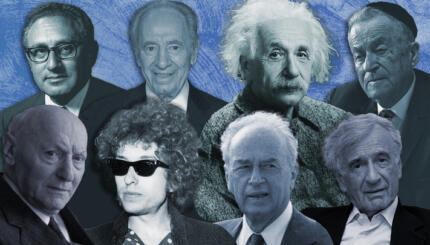I was recently sharing my excitement about Bill Bryson’s latest
book,
At Home
, during a Friday night sermon. The premise of the book is how we can learn so much history from the very ordinary objects in our homes. He writes:
Looking around my house I was startled and somewhat appalled to realize how little I knew about the domestic world around me. Sitting at the kitchen table one afternoon, playing idly with the salt and pepper shakers, it occurred to me that I had absolutely no idea why, out of all the spices in the world, we have such an abiding attachment to those two. Why not pepper and cardamom, say, or salt and cinnamon? And why do forks have four tines and not three or five? There must be reasons for these things… I heard a reference on the radio to someone paying for room and board, and realized that when people talk about room and board, I have no idea what the board is that they are talking about. Suddenly the house seemed a place of mystery to me.
I started to turn these questions in my head, and to think about the Jewish home this way. A few years ago Vanessa Ochs wrote an article in which she proposed ways of categorizing the things in a Jewish home. Her categories, I realized, also provide ways that enable us to use our everyday household objects to tell the story and the history of the Jewish people and, more specifically, our personal family histories. The first category is ‘Articulate objects’. These are the self-evident items that might tell you that you are in a Jewish home, like a mezuzah on the door, a menorah, a challah cover. The specific ones that we have may tell a personal story, but the objects themselves tell more of the ‘official’ history of Judaism.
The second category she calls ‘Jewish-Signifying Objects’. For example, it is not unique to Jewish families to have photographs of the grandchildren in abundance. However, the university graduation photos of every one of my grandmother’s children and grandchildren all lined up on one wall tells a social history of the first generation of her family to get a college education, and the enormous value that a Jewish parent places on education in general.
The final category is what Ochs labels ‘Ordinary objects transformed.’ These are things that might be found in any household, but in a specific context take on the role of klei kodesh – holy objects that we use for sacred purpose or mitzvot. An ornate white tablecloth that is wrapped in plastic and taken out once a year is more than just a nice, white tablecloth. Used on Rosh Hashanah it is being used for the act of
hiddur mitzvah
– to beautify the mitzvah of making a festive meal. I use my home computer for all kinds of things, but 99% of the time that I am on Skype, it is to connect with my parents, in part an expression of kabed avicha v’et v’imecha – honor your mother and father.
I can’t wait to read the rest of Bill Bryson’s book so that I can walk from room to room in my home and tell the stories and the history of our society through the ordinary objects that I see. But it is also great fun, and a great way to do Jewish storytelling, for each of us to look around our homes for ordinary and everyday things that tell our Jewish stories. Give it a go, and I’d love for you to post some of your personal and family Jewish stories about some of the ordinary things in your home in the comments here. I’ll cross-post some of the best ones on my personal blog too.
challah
Pronounced: KHAH-luh, Origin: Hebrew, ceremonial bread eaten on Shabbat and Jewish holidays.
mitzvah
Pronounced: MITZ-vuh or meetz-VAH, Origin: Hebrew, commandment, also used to mean good deed.
Rosh Hashanah
Pronounced: roshe hah-SHAH-nah, also roshe ha-shah-NAH, Origin: Hebrew, the Jewish new year.



